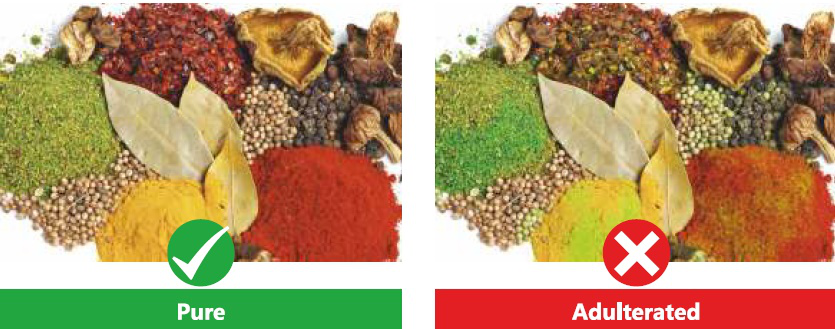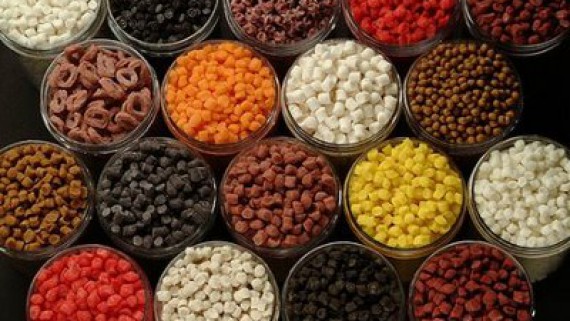The Study of Food Adulteration and Its Side Effects on Public Health
Author– Dr. Neha Lohia, Manager (CRM and Research & Development)
Adulteration is deliberate contamination of food material with low quality, cheap and nonedible or toxic substances. The prohibited substances are either added or partly or wholly substituted. Food adulteration can result in development of various kinds of diseases, which can even result in death. It is also act as a slow poison which again can have deleterious effect on your health. Adulteration of food is becoming an epidemic that affects human lives on a large scale. The use of adulterants such as colours, chemicals, pesticides, and additives are although acceptable but dangerous also which is regularly practiced in India. The major reason for contamination /adulteration in food especially in India is either due to financial gain or carelessness. Further, lack in proper hygienic condition of processing, storing, transportation and marketing are also main cause of contamination. This ultimately results in ill health of consumer which in turn is getting cheated and often becomes victim of various diseases. This becomes a vicious cycle of ill health which directly affects the future of the country, both economically and ecologically.

FSSAI has been stringent with respect to food quality and safety of consumers. Dainik Bhaskar conducted a random study on samples of spices, cereals, processed foods, puja samagri, milk and dairy products which were collected from local vendors across markets from Jaipur. The samples were analysed at CEG Test House & Research Centre Pvt Ltd. In all 48 samples were tested for adulteration out of which 14 samples failed (Table 1).
Table 1: Data on Adulteration Study
| Sample Name | Result | Parameter Failed |
| Chandi Ke Vark | Fail | Al – 91.86% |
| Silver Leaves | Fail | Al – 99.96% |
| Chandan Powder | Fail | Artificial Colour |
| Sindoor | Fail | Artificial Colour |
| Chilli Powder | Fail | Water soluble synthetic colour |
| Red Chilli Powder | Fail | Water soluble synthetic colour & Sudan Dye |
| Red Chilli Powder | Fail | Water soluble synthetic colour |
| Red Chilli Powder | Fail | Water soluble synthetic colour & Sudan Dye |
| Heeng (Asafoetida): | Fail | Starch |
| Haldi Powder | Fail | Saw Dust |
| Pooja Roli Kumkum | Fail | Artificial Colour |
| White Chandan Stick | Fail | Artificial Colour |
| Red Chandan Stick | Fail | Artificial Colour |
| Synthetic Food Colour | Fail | Ash 68.29% |
The results indicated that the red chilli powder samples were adulterated with Sudan Dyes and water soluble synthetic colour. Colouring agents are being added to various foods including chili powder to intensify, mimic, and prolong good appearance which are similar to the natural red colours. Asafoetida samples were found to contain starch as an adulterant and saw dust was present in haldi powder samples. Artificial colour was found to be present in all the materials used in havan or puja. Long-term consumption of adulterated spices may lead to stomach disorders, vomiting, diarrhoea, liver and skin disorders, neurotoxicity and even cancer. Thus, this clearly indicates that the consumers are being cheated and our health is at stake.

The silver leaves or chandi varak was found to contain aluminium (91 – 99 %). Aluminium is a heavy metal that can cause health issues and therefore is not safe for human consumption. The problem of adulteration has also been addressed through the new standards as FSSAI has given the maximum weight of silver per square meter which is 2.8 grams and aluminium cannot be beaten so thin and hence the recommended weight of silver is so less. Studies have reported that increased risk of Alzheimer’s disease among individuals who are chronically exposed to aluminium in drinking water. Similarly, when a person will regularly and frequently consume sweets with silver varak adulterated with aluminium will be prone to develop Alzheimer’s disease. Further, chronic exposure to aluminium can cause specific encephalopathy with dementia syndrome.

Adulteration is itself dangerous as it degenerates the quality of the food we eat. This results in making the food of sub-standard quality for human consumption. With respect to spices, the most commonly adulterated items include red chilli powder, turmeric, coriander, cumin powder, garam masala, and many more. These are either adulterated with dust, water soluble synthetic colour, Sudan dyes or contains pesticides that exceeds the permitted limits prescribed by FSSAI or other regulatory bodies such as the European Union. Adulteration is intended for economic gains but it leads to serious public health risk.
Acknowledgement
I would like to thank our Managing Director, Mr. Vishwas Jain and Director, Mr. Sundeep Singh Chauhan for providing me opportunity to put my views on this important point of discussion nowadays.
References
- https://www.researchgate.net/publication/301299209_Food_adulteration_Decreasing_walk_time_in_the_earth_for_many_people
- B. V. Sudheer, M. K. Lakshmidevi, D. V. Krishna Rao (2015) Adulteration of the Pulses in Coastal Region of Andhra Pradesh. Journal of Evolution of Medical and Dental Sciences; Vol. 4, Issue 36, May 04; Page: 6187-6192, DOI: 10.14260/jemds/2015/902
- Alim-un-Nisa, Naseem Zahra, Yasha Nazir Butt (2016) SUDAN DYES AND THEIR POTENTIAL HEALTH EFFECTS Pak. J. Biochem. Mol. Biol.; 49(1).



